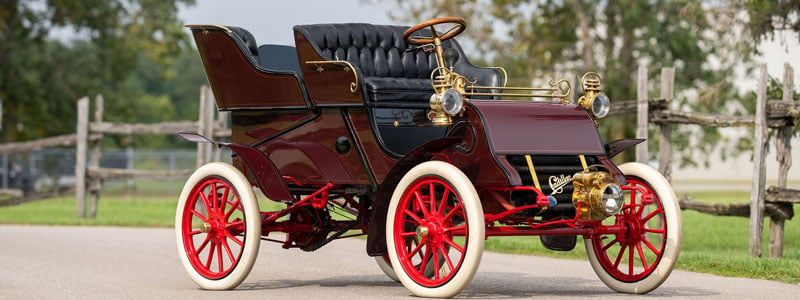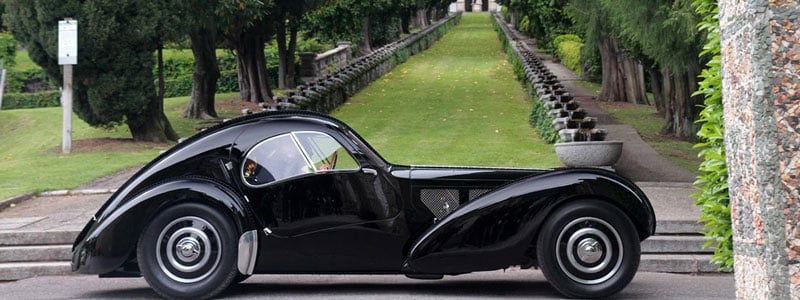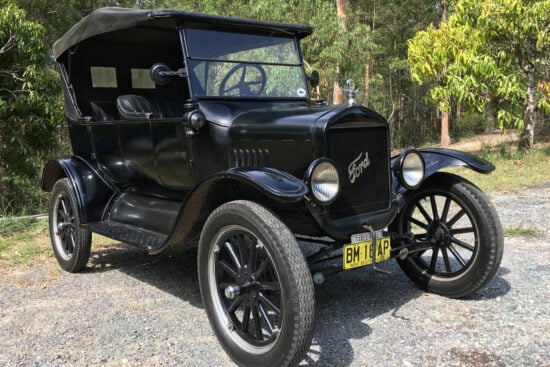Whether your dreams of owning a classic car originated from iconic cars on the silver screen or countless visits to car shows, it’s exhilarating to finally be ready to buy. However, a classic car purchase is a major investment that requires special care. Before embarking on your classic car search, you should have a firm understanding of how you expect your classic car to fit into your lifestyle and the special requirements of keeping it in pristine condition.
There are several types of classic cars. From sports cars to vintage cars that can’t be driven on modern highways, each vehicle has special characteristics and car storage requirements. This classic cars list shares essential details about the most common types of classic cars and critical differences between each type. By learning more about classic cars and how car collectors use them, you’ll be armed with the information you need to determine which type of classic car is most likely to fit your lifestyle.
5 Types of Classic Cars
So, how old is a classic car? Classic cars can generally be described as vehicles over 25 years old, there are distinct categories that meet different needs and lifestyles. Car collectors choose cars based on appearance, the era they were manufactured in, and performance features. The type of classic car you choose should be one that fits your lifestyle and expectations. Classic cars can be divided into these five basic categories.
Antique Cars
The first production cars, these cars were made at the dawn of the auto industry, before the 1920s. Also known as “horseless carriages”, antique cars are not meant to be driven since they weren’t made for open roads. Antique cars are often cherished showpieces and can sometimes be found in vintage condition for an intimidating price or in need of significant restoration. Some of the most popular antique cars include the 1903 Cadillac Model A, the 1912 Ford Model T, and the 1914 Mercer Raceabout.

Vintage Cars
Made between the 1920s and 1930s, vintage cars are some of the oldest cars that are still drivable today. These old-fashioned cars are known to attract crowds at car shows but aren’t meant to be driven daily, given their age and rarity. You can expect a vintage car to require significant renovation and parts may be difficult to find. Examples of popular vintage cars include the 1921 Hudson Super Six Phaeton, the 1924 Aston Martin Grand Prix, and the 1925 Flint Model E-55.
Classic Cars
Some pieces of literature include antique and vintage cars in the classic car spectrum. However, it’s best to consider the different requirements that come with each distinct automotive era. A classic car is one that is older than 25 years old, but still able to drive as we do with modern cars. While they don’t represent the modern convenience of today’s station wagons or SUVs, classic cars bring with them an unmistakable flair that can’t be missed.
A variety of makes and models fall under the wide umbrella of classic cars, and these vehicles can be found with a wide array of restoration needs. Since these cars are more similar to modern vehicles in terms of design, handling, and safety features, many meet standard driving requirements for the open road. Classic cars can be great for road trips, car shows, or even daily commutes. Some of the most popular classic cars include the Volkswagen Beetle, the Bugatti Type 57, the Mercedes-Benz 300SL Gullwing, and the Jaguar E-Type.

Sports Cars
Designed for maximum speed and performance, these cars are meant for people who enjoy driving. Sports cars have been designed since the 1960s. They’re known for their compact body types, high-performance engines, and advanced handling capabilities. Sports cars are typically two-seaters with flashy styles and sleek paint jobs. They fall into the two main categories of Grand Touring and Roadster, and the wide variety of shapes and styles make them popular among car enthusiasts and collectors the world over.
The different sizes, styles, and models of classic sports cars make them ideal for all types of activities, including racing, daily commuting, car sharing, long trips, car shows, project cars, and more. When choosing a classic sports car, consider how you intend to use the vehicle as well as your restoration abilities. You may be able to find some models in vintage condition or with varied restoration requirements. Some of the most popular sports cars around the world include the Chevrolet Corvette, Lamborghini Sesto Elemento, the Porsche 911, the Dodge Viper, and the Chevy El Camino.
Muscle Cars
These cars are notorious for their capability of going from 0 mph to 60 mph in seconds, thanks to their performance transmissions, engines, and more. Some of the most popular cars throughout history, muscle cars were made popular by famous names like Carroll Shelby and Enzo Ferrari. With V8 engines, powerful drivetrains, dual exhaust pipes, and rear-wheel drive, these cars are made to satisfy a need for speed. If you’re like many car enthusiasts, picking a favorite classic muscle car will be a challenge. Some of the most popular models of these famed vehicles include the Shelby Cobra, Ford Mustang, the Pontiac GTO, the Dodge Charger, the Chevrolet Chevelle SS 454, and the Ferrari F40.

Key Differences Between the Types of Classic Cars
You may have a specific type of classic car in mind based on appearance, popularity, or other features. Whatever reason you choose to invest in such an iconic piece of automotive history is certainly acceptable. However, it’s a good idea to understand the distinctions between the different types of classic cars. By learning the unique things that classify a car as antique, vintage, or classic, you can get a better understanding of your car’s value, insurance requirements, and storage needs. In the broadest sense, classic cars are generally defined by price, age, and historic status. Here’s the breakdown.
Age
Unlike retro cars, which are modern vehicles styled to look like older cars, classic cars all have more than a few years on them. Early automotive manufacturing is marked by distinct eras that are easier to distinguish than the differences between modern vehicles.
- Antique Cars: Built before 1920
- Vintage Cars: Manufactured between 1920 and 1930
- Classic Cars: At least 25 years old
Historic Status
The historic status of your car can affect its classification as antique, vintage, or classic. The historic status of vehicles varies from state to state and may include vehicle registration fees. To determine the historic status of your classic car, you’ll need to register it at your local DMV or BMV office or website. You’ll be prompted to answer a few questions about the vehicle for classification. There may also be restrictions that come with putting a historic tag on your vehicle, so it’s important to learn the rules before completing the registration.
While options vary by state, these are the most common historic tags available for classic cars.
- Vintage Vehicle
- Historic Vehicle
- Custom Collector Vehicle
- Classic Car
- Street Rod
- Antique Vehicle
Price
While your vehicle’s price doesn’t denote the category it falls into, it will likely indicate the popularity and potential resale value of your investment. Technically speaking, old school cars like a mid-80s sedan are considered classic cars by their age alone. However, such a vehicle is not likely to fetch a hot price at auction. Your car’s price won’t stop you from getting a classic car tag, but it might make restoration more challenging since parts might be difficult to find. You may also find that you’ll be putting in more money than it’s worth to restore less popular classic cars.
After looking over the many amazing types of classic cars available, it’s easy to see there isn’t a specific “best classic car” for every car collector. Most car enthusiasts follow their hearts and purchase what makes them happy. Still, before you spend a hefty sum on a classic car, it’s vital to consider the care requirements for such an important investment.
Dry and clean storage is an essential part of maintaining the quality of a classic car over the years. Antique cars may even require climate-controlled space. More than half of car collectors have paid over $5,000 to store their classic cars. Luckily, there are less expensive options available to find safe storage for your classic car. Neighbor acts as a connective link between local car owners and property owners who have storage space available. With a simple search, you can find a space that meets your criteria and fits within your budget. Visit our website to learn more about affordable storage options with Neighbor or how to make the most of your available storage space.







